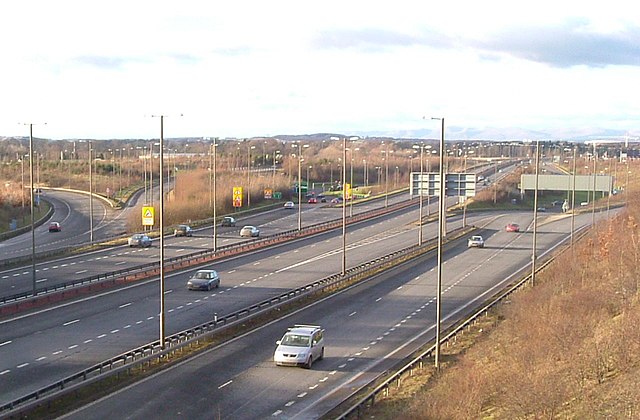Edinburgh congestion charge
The Edinburgh congestion charge was a proposed scheme of congestion pricing for Scotland's capital city. It planned to reduce congestion by introducing a daily charge to enter a cordon within the inner city, with the money raised directed to fund improvements in public transport. The scheme was the subject of intense public and political debate and ultimately rejected. A referendum was held and nearly three-quarters of respondents rejected the proposals.
Princes Street - at the centre of the proposed city centre cordon
The Edinburgh City Bypass junction with the M8 motorway which was one of the cordons for the proposed congestion charge.
Congestion pricing or congestion charges is a system of surcharging users of public goods that are subject to congestion through excess demand, such as through higher peak charges for use of bus services, electricity, metros, railways, telephones, and road pricing to reduce traffic congestion; airlines and shipping companies may be charged higher fees for slots at airports and through canals at busy times. Advocates claim this pricing strategy regulates demand, making it possible to manage congestion without increasing supply.
Electronic Road Pricing gantry in Singapore, the first place in the world to implement an urban cordon area congestion pricing scheme.
At Old Street, street markings and a sign (inset) with the white-on-red C alert drivers to the congestion charge, London.
Rome's Traffic Limited Zone (ZTL) entry control point with automatic surveillance.
Trängselskatt automatic control point at Ropsten, Stockholm. The sign on the right informs the drivers about the different fees, which vary depending on the time of the day.






